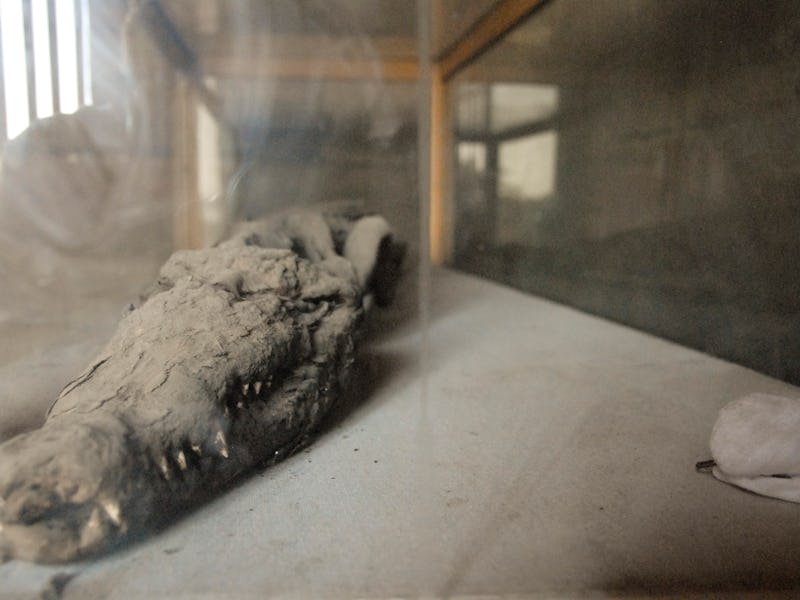Crocodile Mummy Genes Confirm an Ancient Egyptian Hypothesis
'Two thousand years later, we use DNA and show that they were absolutely right.'

Wildlife researcher Evon Hekkala, Ph.D., from the American Museum of Natural History and, found herself in Egypt with a crocodile mummy in her hand. That’s when she discovered that there were two species of crocodiles that inhabit the Nile River instead of only one, as scientists previously assumed.
While modern researchers were surprised to learn this, Hekkala, who is also an assistant professor at the University of Fordham, believes that ancient Egyptians living thousands of years ago were able to tell these crocs apart. They kept them around, like some kind of scaly cat species, and mummified them as a symbol of Sobek, or Suchos — the father of the moon in Egyptian cosmology.
“I love that the cosmology of different cultures sometimes can lead us to hypotheses that we never would have realized,” Hekkala told Inverse on Wednesday, where she presented her findings at the Inverse Lunar Eclipse Party and Science Fair at Caveat in New York City.
Hekkala's booth at the Inverse Science Fair. Via @shazthephotog.
“So [the Egyptians] had a hypothesis that this was a separate species 2,000 years ago and they identified these as separate species of crocodiles that they kept in temples. Two thousand years later, we use DNA and show that they were absolutely right,” she says. Hekkala first published her findings in the journal Molecular Ecology in 2011.
This newly discovered species was named Crocodylus suchus after the god Sobek, who was also the god of fertility. In ancient Egypt, royalty and commoners alike would be buried with mummified Crocodylus suchus because it was believed to grant them fertility in the next life.
“Everybody would have crocodile mummies because they were thought to grant strength in crossing the rivers into afterlife and fertility because they wanted to make sure they were fruitful even in the afterlife,” said Hekkala.
Sobek was so damn fertile that he got together with Hathor, the queen of the Milky Way, to give birth to Khonsu, the god of the moon. In essence, a croc had sex with a queen to make the moon — if only science were that easy.